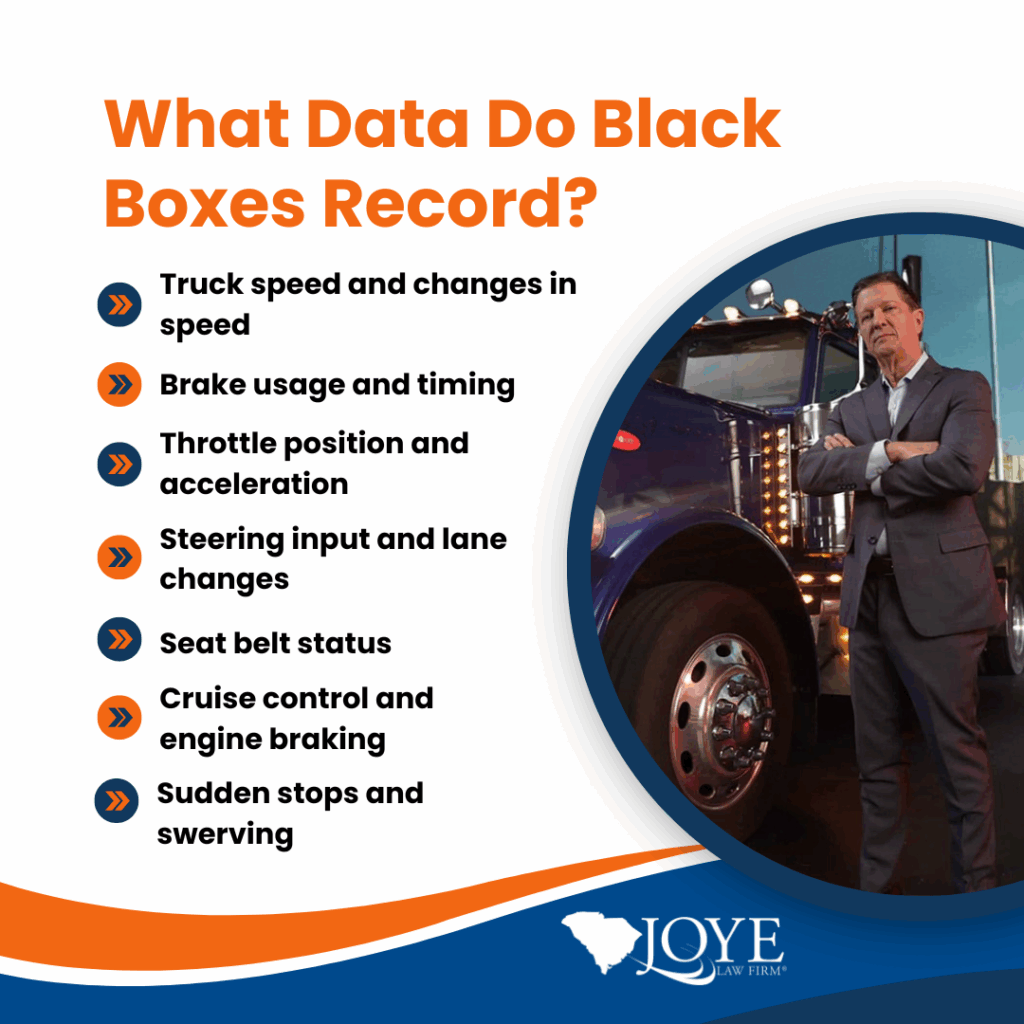
After a big truck crash, the event data recorder (EDR) or black box is one of the most important sources of evidence. The device can help explain how the collision occurred and get victims of truck accidents the information they need for full and fair compensation.
Since 1968, Joye Law Firm Injury Lawyers has been helping South Carolina accident victims. Over the decades, we have built a reputation as leaders in truck accident litigation who know how to hold the negligent trucking companies accountable. Our attorneys stay on the cutting edge of trucking law. Attorneys Mark Joye and Melissa Mosier serves as members of the American Association for Justice Trucking Litigation Group, a national organization dedicated to advancing knowledge and advocacy in this highly complex area of law.
Trucking companies have teams of insurers and lawyers fighting to protect their bottom line, placing victims at a significant disadvantage. That’s where we come in: we level the playing field for injured underdogs.. When trucking companies break the rules or fail to follow safety protocols, we hold them accountable. In many truck accident lawsuits, we prove what happened and who was responsible using black box data.
What Is Black Box Data in Commercial Trucks?
A truck’s black box, also known as an event data recorder (EDR), is a small device installed in most commercial vehicles. These devices track and record multiple data points about the truck’s operation before, during, and after a crash.
The data often includes the truck’s speed, throttle position, brake application, seat belt usage, and more. Some trucks also have electronic logging devices (ELDs) that record driver logs, hours behind the wheel, and compliance with federal safety rules.
Most commercial trucks may also include electronic control modules that provide a broader picture of the truck’s behavior during critical events. In commercial truck accidents, this data can offer more detail than human memory or basic crash reports. It may even record the exact moment a collision occurs, along with how the truck’s systems responded.
By analyzing black box data, lawyers and accident investigators can better understand the events leading up to the crash.
How Black Box Data Supports Truck Accident Lawsuits
Joye Law Firm has handled many truck accident lawsuits. One of the biggest challenges is always proving exactly what happened. Drivers often have different stories, and physical evidence may not tell the full picture. Black box evidence helps fill in those gaps. When used with other information like witness testimony, surveillance videos, and police reports, this raw data creates a timeline of events. Building that timeline is critical for accident victims who are seeking fair compensation.
In truck accident claims, it’s not enough to suspect the trucking company was careless. You must prove it. Black box records can help demonstrate violations of safety rules or patterns of unsafe driving. When combined with legal investigation, this data becomes one of the most important forms of physical evidence in truck accident cases.
For example, Joye Law Firm represented a man who suffered a traumatic brain injury in a violent I-95 rear-end crash caused by a commercial truck. Attorneys Mark Joye and Melissa Mosier uncovered black box data that proved the truck driver was driving too fast for conditions. Thanks to this clear evidence and a trial-ready approach, our firm built an unshakable case, forcing the defense to agree to a $6.25 million settlement and ensuring our client and his family have the financial resources they need to move forward.
What Data Do Black Boxes Record in Truck Accidents?
Truck black boxes record a wide range of information. This includes:
- Vehicle speed and changes in speed
- Brake usage and timing
- Throttle position and acceleration
- Steering input and lane changes
- Seat belt status
- Use of cruise control or engine braking
- Sudden stops or swerving
- Airbag deployment
Many black boxes in commercial trucks also track engine performance and maintenance alerts. Some devices record data for up to 30 seconds before and after a crash, allowing accident reconstruction experts to analyze what happened during that window.
This information can answer key questions like:
- Did the driver attempt to brake?
- Was the truck driver speeding?
- Was the truck’s condition safe for the road?
When reviewing a personal injury case, this type of data can show whether the driver or company followed federal regulations. If a driver exceeded legal hours or skipped rest periods, those logs may support a claim of fatigue. Combined with black box evidence, this builds a stronger truck accident claim.



